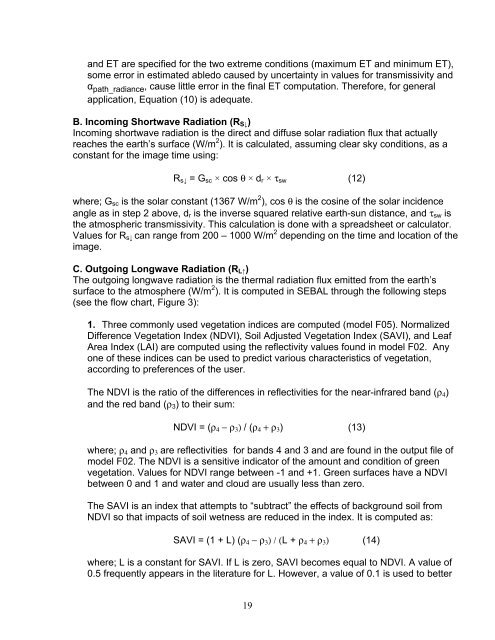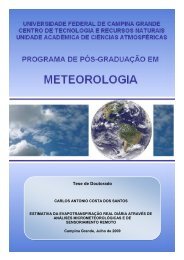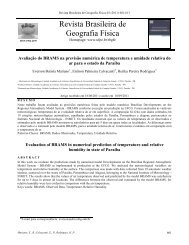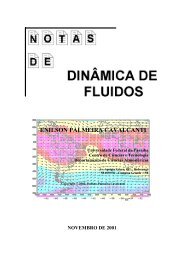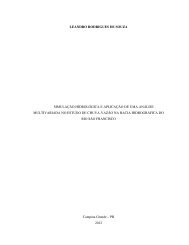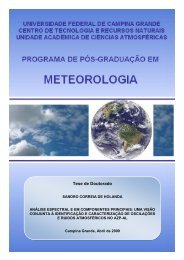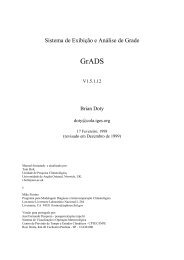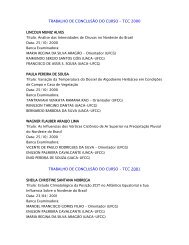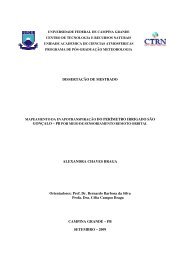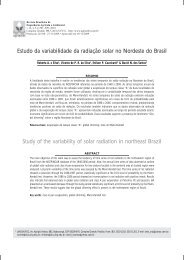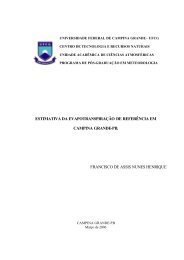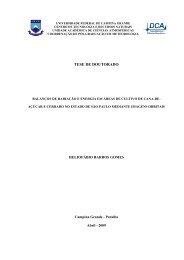You also want an ePaper? Increase the reach of your titles
YUMPU automatically turns print PDFs into web optimized ePapers that Google loves.
and ET are specified for the two extreme conditions (maximum ET and minimum ET),some error in estimated abledo caused by uncertainty in values for transmissivity andα path_radiance , cause little error in the final ET computation. Therefore, for generalapplication, Equation (10) is adequate.B. Incoming Shortwave Radiation (R S↓ )Incoming shortwave radiation is the direct and diffuse solar radiation flux that actuallyreaches the earth’s surface (W/m 2 ). It is calculated, assuming clear sky conditions, as aconstant for the image time using:R s↓ = G sc × cos θ × d r × τ sw (12)where; G sc is the solar constant (1367 W/m 2 ), cos θ is the cosine of the solar incidenceangle as in step 2 above, d r is the inverse squared relative earth-sun distance, and τ sw isthe atmospheric transmissivity. This calculation is done with a spreadsheet or calculator.Values for R s↓ can range from 200 – 1000 W/m 2 depending on the time and location of theimage.C. Outgoing Longwave Radiation (R L↑ )The outgoing longwave radiation is the thermal radiation flux emitted from the earth’ssurface to the atmosphere (W/m 2 ). It is computed in <strong>SEBAL</strong> through the following steps(see the flow chart, Figure 3):1. Three commonly used vegetation indices are computed (model F05). NormalizedDifference Vegetation Index (NDVI), Soil Adjusted Vegetation Index (SAVI), and LeafArea Index (LAI) are computed using the reflectivity values found in model F02. Anyone of these indices can be used to predict various characteristics of vegetation,according to preferences of the user.The NDVI is the ratio of the differences in reflectivities for the near-infrared band (ρ 4 )and the red band (ρ 3 ) to their sum:NDVI = (ρ 4 − ρ 3 ) / (ρ 4 + ρ 3 ) (13)where; ρ 4 and ρ 3 are reflectivities for bands 4 and 3 and are found in the output file ofmodel F02. The NDVI is a sensitive indicator of the amount and condition of greenvegetation. Values for NDVI range between -1 and +1. Green surfaces have a NDVIbetween 0 and 1 and water and cloud are usually less than zero.The SAVI is an index that attempts to “subtract” the effects of background soil fromNDVI so that impacts of soil wetness are r<strong>edu</strong>ced in the index. It is computed as:SAVI = (1 + L) (ρ 4 − ρ 3 ) / (L + ρ 4 + ρ 3 ) (14)where; L is a constant for SAVI. If L is zero, SAVI becomes equal to NDVI. A value of0.5 frequently appears in the literature for L. However, a value of 0.1 is used to better19


